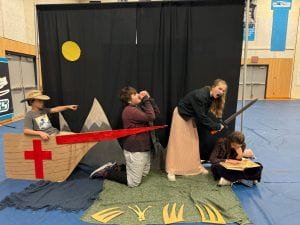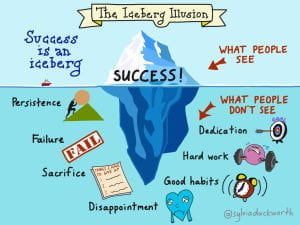Thank you for coming to my presentation of learning. I am the expert on my own learning. I am also responsible and accountable for my own learning. You can expect me to give an honest evaluation of my progress. We will discuss my strengths and opportunities for growth. Thank you in advance for listening and for offering feedback that I can use to improve as a learner.
Tpol
Welcome to my TPol blog post! I will be working on reflecting on my PLP journey so far. Enjoy!

Teamwork/Everyone Doing Their Best Work
Other people:
At the beginning of the year, I had already met most of the people in the grade 8 PLP program. I think at least 50% of the kids were from Cove Cliff (my elementary school) and the rest of them I had met or seen at least once. But even if they were class mates or acquaintances, I hadn’t really worked with them. Team work and group work is very hard and I didn’t have a good idea yet of what it really is. The difference was, now I was forced to work closely with these people every day, collaborating on things as simple as creating a team name or as complicated as the spring exhibition that we just finished. Near the beginning of the year, group projects were so hard for me. Now I recognize that this was because I didn’t know the people in my group as well as I do now. It helps an amazing amount when you know people better. The Oregon field study trip took this idea even further. Now we all understand one another better and this will definitely show in upcoming projects. Knowing how to work with someone, what to expect from them, how to be able to get more from them so they can do their best work… From coming up with rules or ideas you know will help them focus, to making sure that you give them opportunities to understand the project and put their own stamp on the project. Maybe more than I was originally comfortable with.

Me:
Of course, this doesn’t just apply to other people. I have learned how to give myself what I need to do my best work on projects. I know I have to focus, and what I can do for myself so that I am able to do work that i’m proud of. For example, I cannot stress enough how long it took for me to be able to even start writing this paragraph, just because the dogs were barking or the music I was listening to wasn’t the vibe I was going for. I know that I need to create the right learning environment. I need to make an outline or a rough draft so I know where I’m going before I begin. I need to take breaks, and eat food or I wont be able to pay attention.

Growth Opportunities
Planning But Being Flexible
I’ve learned to plan but also be flexible. I also know now that that often the end product is not so similar to what I imagined in my head. When I begin to do something, though it may take me a while to start, once an idea gets screwed into my brain, it keeps growing and growing until it is either unrealistic, or too perfect. One example is the spring exhibition. Ella and I had an original idea of creating a 1:2 scale of an entire cheese factory. We planned on dressing up like factory workers that we saw when we visited the Tillamook Creamery. I had no idea that this original concept would grow into our tiny clay cheese display and our rubber glove cow udder. I think I have more work to do on my patience. More time spent on outlines and planning, while knowing I have to be flexible and that the project may change over time.

Going Deeper:
Another thing that is a major struggle for me is taking feedback. I have a hard time revising things I have already worked hard on, I think a part of my brain is lazy and wants to stop working when something is “good enough”. I still have a hard time taking the extra steps, adding depth to my writing if I am not interested or in the right mindset to continue on working. I usually begin things like blog posts by just retelling, telling people things they already know, and summarizing things the way they look in my head. I need to remember to constantly add more detail and not just review what happened. I need to write not about what happened and more about my unique point of view and how it effects me as a person. Once example of this was my Science Keynote. ‘Swab the School’ was a project we worked on where we swabbed different places around the school and observed the bacteria growing in the pitting dish we transferred the germs into. If I am being perfectly honest, this project didn’t really interest me in the beginning. I didn’t really want to know what is happening on the handles of doors, or the faces of mirrors. I needed to push myself to want to understand the project, and when I did I was able to excel at it, and complete the keynote well. That is a perfect example of when pushing myself the extra step really did make the difference.


Engagement and FAIL:
One other thing that I have been working on is engagement. From the outside, It may seem like I am a very engaged and energized person, because I am, but sometimes, my laziness gets in the way, and I really just want to give up. This has happened many times during my PLP journey, from just thinking about this Tpol, to presenting it now. One of my favourite examples of this happening was my Destination Imagination project. We went to the first challenge with a pile of trash- I am not exaggerating. I can barely think about where we started without cringing. After the first competition, we all wanted to be done and we wanted to give up so that we wouldn’t have to do another Destination Imagination competition. We had already done it, and failed miserably, so why would we ever do it again? I’m not sure if you remember, but our transition was crazy. I am so incredibly proud just thinking about it. We built a whole new working giant pinball machine like we had originally imagined the first time around. This is solid proof of why we need to remember to take second chances and why it is so important to stay engaged all throughout both in school and in life in general. I need to keep in mind that failing is ok and can lead to something better!

Agency
Ownership and Responsibility:
Agency is a challenge for me but it is also one of my favourite parts of PLP. I love having responsibility, it is so rewarding to take control of something and succeed, it is very fulfilling to complete something you did, that you are proud of. One part of this that I know I have really grown in is the ‘Asking for help’ portion. I know that in the seventh grade, and even just earlier this year, I would sooner run for the hills than ask someone that I didn’t know too well for help. Now that I know my teachers and peers better, I feel so much more comfortable and confident asking for help.

Asking for Help/ Helping Others:
One example of this was when I missed a few days of school visiting my cousins in California, and I needed to catch up on what I missed. I ended up asking multiple classmates about what I missed, and was able to reach the same point as my peers quickly. I also have found that I really enjoy being helpful to others. When we’re working on a project that I have a strong grasp on, I’m always one of the first to volunteer to help others, even if I’m not finished myself. It feels Also, when our PLP 8 class went to Oregon on a field study, and Tyler and a few of my other classmates didn’t come with us, I called Tyler often, to update her on our day and keep her in the loop.

Driving Question
How can you showcase evidence to demonstrate that PLP Success Behaviours have prepared you to advance to the next grade?
I believe that all of the things that I have mentioned throughout this post are evidence that showcase how PLP has prepared me for next year. I am aware there will be many differences between grade 8 and 9, but I am prepared to use the skills I have learned to help me through the new year. Problem solving, Teamwork, Agency, and more are skill I have began to learn this year, and that I will continue to polish throughout my years, not only n high school, but in life.
Outro
I am definitely ready for grade 9. I feel like I’m in a great place after I have overcome so many challenges, but I still have a lot of work to do. I have been working in so many things this year, from taking feedback, to keeping up a steady attitude, and even how to deal with failure. I am excited to continue my PLP journey, as well as my High School journey during the next 4 years. Thank you for listening/reading my presentation of learning!









































